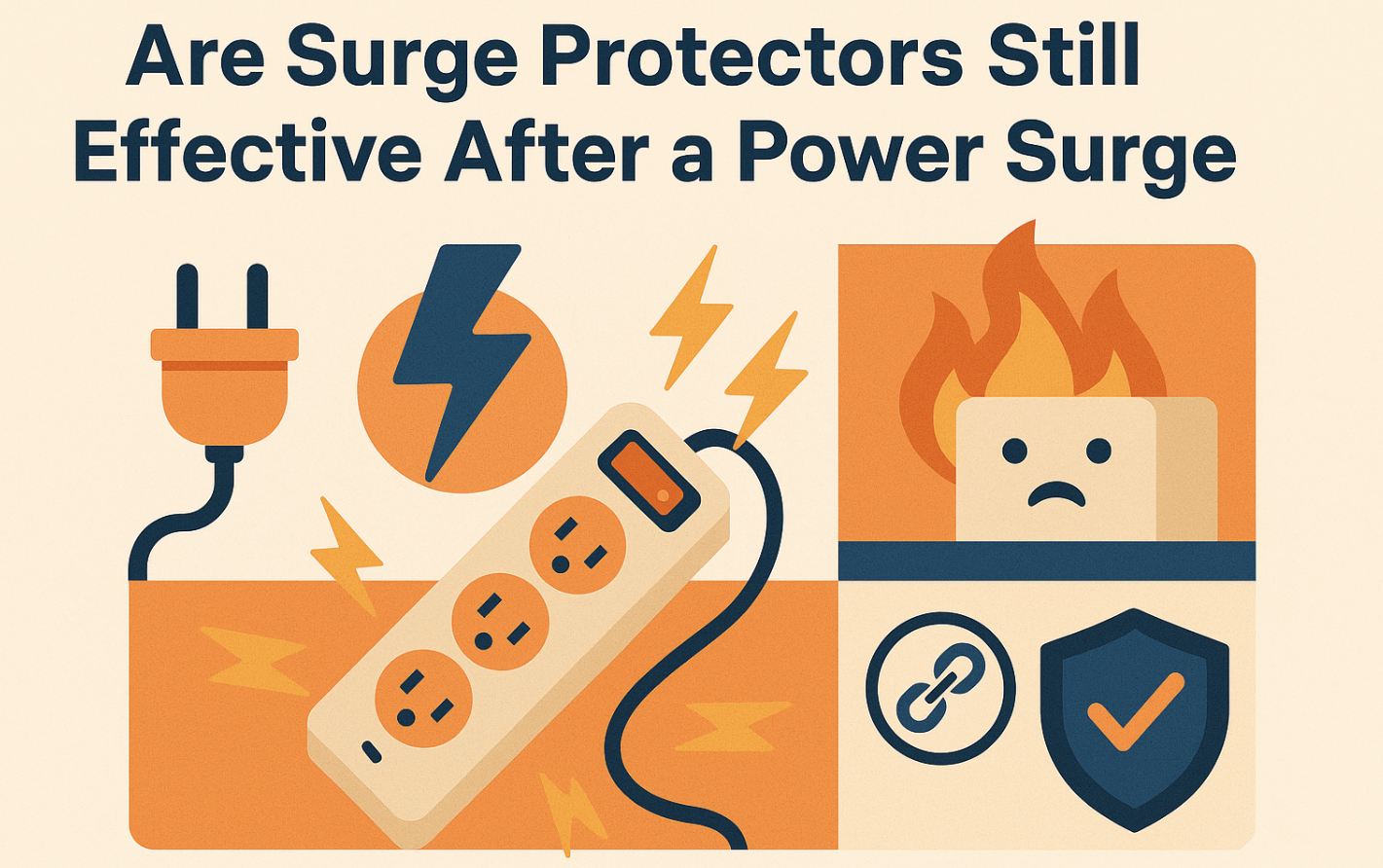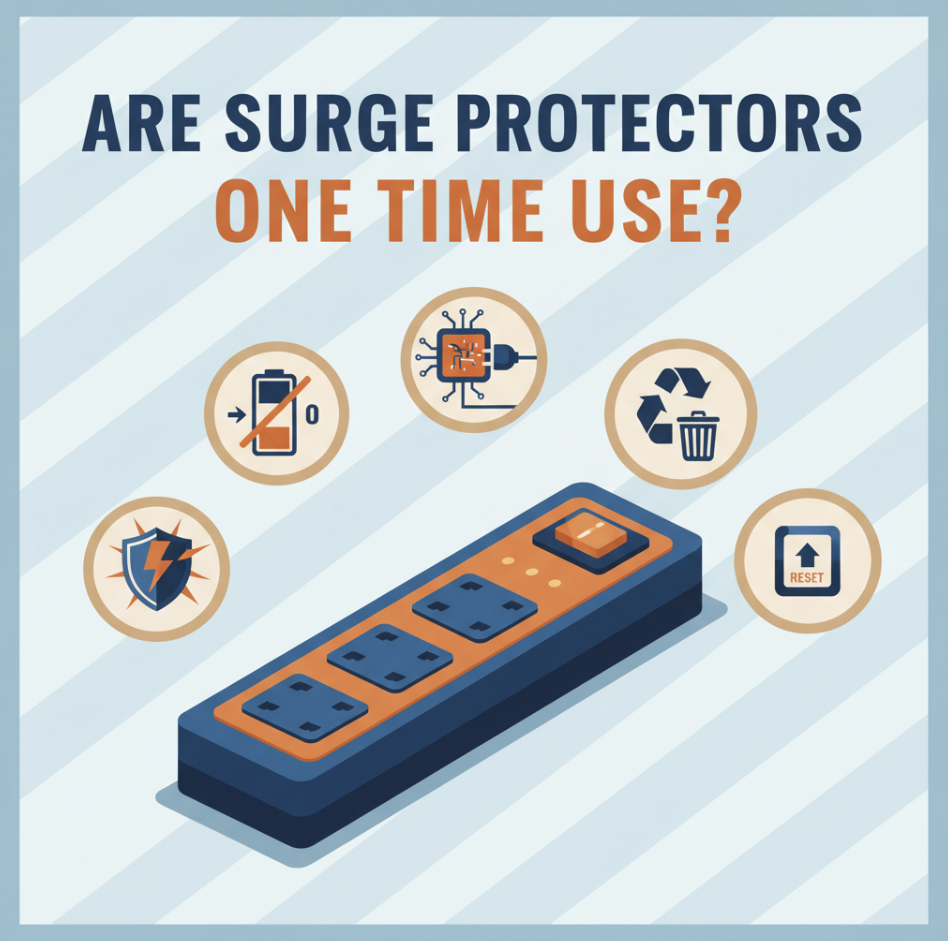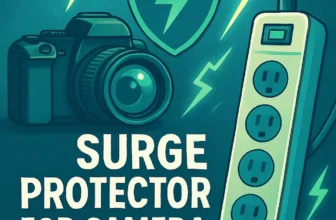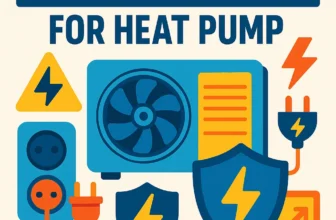Published By: Sean Hudson | Last updated on September 21, 2025 and reviewed by Editorial Team

Surge protectors shield your electronics from sudden voltage spikes, but their ability to protect diminishes over time. Frequent power surges or lightning strikes can wear out their internal components, especially the metal oxide varistor (MOV). You should replace surge protectors every 2 to 3 years or sooner if you notice damage.
So, are surge protectors one-time use?
Yes, many are, especially after a major surge. Regularly checking for signs of malfunction ensures your devices stay protected.
How Surge Protectors Work
Surge protectors play a critical role in safeguarding your electronics from unexpected voltage spikes. To understand how they work, you need to explore their components and the mechanisms behind surge protection.
Key Components of Surge Protectors
Surge protectors consist of several key components, each designed to handle specific tasks during a power surge. Here’s a breakdown of these components and their functions:
|
Component |
Function |
|---|---|
|
Discharge Gap |
Directs excess voltage to the ground, preventing damage to your devices. |
|
Gas Discharge Tube |
Activates during overvoltage to protect circuits by absorbing the surge. |
|
Varistor |
Acts as a resistor that adjusts to voltage changes, blocking surges. |
|
Suppression Diode |
Limits voltage to safe levels, offering final protection for circuits. |
|
Choke Coil |
Reduces interference, enhancing overall surge protection. |
Each part works together to ensure your electronics remain safe during power surges.
The Role of the Metal Oxide Varistor (MOV) in Surge Protection
The Metal Oxide Varistor (MOV) is the heart of most surge protectors. It reacts instantly when voltage exceeds its rated capacity. MOVs conduct large currents to divert the surge away from sensitive components. This process limits the voltage to about three to four times the normal circuit level.
MOVs also absorb excess energy, ensuring your devices stay protected. Their quick response and energy absorption capabilities make them essential for effective surge protection.
How Surge Protectors Absorb and Redirect Excess Voltage
When a power surge occurs, the surge protector detects the excess voltage. Components like the MOV and gas discharge tube spring into action. They absorb the extra energy and redirect it safely to the ground. This prevents the surge from reaching your connected devices. By doing so, surge protectors act as a barrier, ensuring your electronics remain unharmed.
Understanding these mechanisms helps you appreciate the importance of maintaining functional surge protectors for reliable protection against surges.
Are Surge Protectors One Time Use?
Surge protectors are essential for shielding your electronics from power surges, but their ability to protect often depends on their design and usage. Understanding whether they are one-time use devices can help you make informed decisions about their maintenance and replacement.
Understanding Sacrificial Surge Protectors
Some surge protectors are sacrificial by design. These devices absorb the excess energy from a surge, protecting your electronics but often rendering themselves ineffective afterward.
-
Many surge protectors fail intentionally after a surge to prevent further damage.
-
A direct lightning strike can overwhelm any surge protector, emphasizing their one-time use nature.
-
Low-cost power strips often act as sacrificial protectors, designed to fail after a single surge.
This sacrificial mechanism ensures your devices remain safe, but it also means you need to replace the surge protector after a significant surge.
Factors That Affect a Surge Protector’s Lifespan
Several factors influence the duration for which a surge protector remains effective. Paying attention to these can help you extend its lifespan:
|
Factor |
Description |
|---|---|
|
Quality |
High-quality surge protectors last longer due to better components and design. |
|
Usage |
Frequent or severe power surges wear out the device faster. |
|
Environment |
Cool, dry, and clean conditions help maintain performance. |
|
Maintenance |
Regular inspections can detect issues early and improve longevity. |
|
Protection Type |
Different designs, such as whole-house or plug-in protectors, have varying lifespans. |
Avoid overloading your surge protector with too many devices or high-powered appliances. This practice reduces strain and prolongs its effectiveness.
Why Surge Protectors May Stop Providing Surge Protection
Surge protectors lose their ability to protect after repeated exposure to power surges. The internal components, especially the metal oxide varistor (MOV), degrade over time. Once the MOV wears out, the surge protector can no longer absorb or redirect excess voltage. Visible damage, such as burn marks or melted parts, often indicates failure. And, if the indicator light turns off, the device may no longer provide protection.
Regularly checking your surge protectors ensures they remain effective. Replacing them promptly after a major surge or when signs of wear appear keeps your electronics safe.
Signs You Need to Replace Your Surge Protector
Surge protectors don’t last forever. Over time, their ability to shield your electronic devices from power surges diminishes. Recognizing the signs of a failing surge protector ensures your devices remain protected.
Checking Indicator Lights for Surge Protection Status
Indicator lights on surge protectors provide valuable information about their functionality. These lights often signal whether the device is still capable of protecting your electronics. Use the table below to interpret common indicator light statuses:
|
Indicator Light |
Meaning |
|---|---|
|
Protected |
The surge protector is functioning correctly. |
|
Grounded |
The outlet is properly grounded. |
|
The outlet lacks proper grounding. |
|
|
Over-Voltage |
A voltage spike has occurred. |
|
Under-Voltage |
A voltage dip has been detected. |
|
Inrush Current |
Excessive current draw by a connected device. |
If the “Protected” light is off, the surge protector may no longer provide adequate protection. Replace it immediately to avoid risking your electronic devices.
Identifying Visible Damage or Burn Marks
Physical damage is another clear sign that your surge protector needs replacement. Look for the following:
-
Burnt or melted components
-
Charred circuit boards
-
Cracks in the casing
-
Frayed wires
-
Loose connections
-
A distinct smell of burnt plastic
These issues indicate that the surge protector has absorbed a significant surge or has deteriorated over time. Continuing to use a damaged surge protector puts your electronics at risk.
Loss of Power or Functionality in Connected Devices
If your electronic devices experience frequent power interruptions or fail to function properly, the surge protector might be the culprit. A worn-out surge protector can no longer regulate voltage effectively, leading to inconsistent power delivery. Test your devices with a different surge protector to confirm the issue. If the problem resolves, it’s time to replace the old one.
Regularly inspecting your surge protectors and addressing these warning signs ensures your electronic devices remain safe from unexpected power surges.
What to Do After a Power Surge
Experiencing a power surge can leave you wondering if your surge protectors are still effective. Taking the right steps ensures your devices remain protected and helps you avoid future risks.
Testing Your Surge Protector for Effectiveness
After a power surge, you should test your surge protector devices to confirm they still provide protection. Follow these steps:
-
Visual Inspection: Look for physical damage, such as burn marks or melted parts. If the indicator light is off or red, the power strip surge protector may no longer work.
-
Use a Multimeter: Set the multimeter to AC voltage mode. Measure the voltage at the input and output of the surge protector. Abnormal readings suggest internal damage.
-
Insulation Resistance Test: Use an insulation resistance tester to check the input and output terminals. Ensure the readings match the manufacturer’s safe range.
-
Professional SPD Tester: For a thorough evaluation, use a professional tester to simulate surges and assess the device’s response.
Testing ensures your power strip surge protectors remain reliable.
When and How to Replace Surge Protectors
Replacing surge protectors regularly is essential for maintaining effective protection. Here’s what you should do:
-
Inspect your surge suppression devices for wear or damage.
-
Replace power strip surge protectors every 2 to 3 years, even if they appear functional.
-
Replace immediately after a significant surge or if you notice physical damage.
-
Check the manufacturer’s warranty for replacement guidelines.
Frequent replacements ensure your electronics stay safe from future surges.
Choosing the Right Surge Protector for Future Protection
Selecting the right surge protector improves your defense against voltage spikes. Consider these features:
-
Joule Rating: Choose at least 600 joules for adequate protection.
-
Number of Outlets: Ensure enough outlets for your devices, including USB ports if needed.
-
Type of Protection: Look for advanced designs like MOV or gas discharge tubes.
-
Warranty: Opt for products with long warranties from reputable brands.
-
Additional Features: Consider options with LED indicators, noise filtering, or child-proof designs.
Investing in high-quality power strip surge protectors ensures long-term safety for your electronics.
Surge protectors play an important role in shielding your electronics from power surges. Their effectiveness, however, can diminish after a surge. Regular inspections help you detect physical damage, discoloration, or wear.
Functional tests ensure the surge protector remains reliable. These steps extend its service life and maintain optimal protection for your devices.
Replacing worn-out units promptly ensures your electronics stay safe. Investing in high-quality options, such as whole house surge protectors, provides robust protection for all your devices. These protectors handle larger surges and offer long-term reliability. By staying proactive, you safeguard your electronics and avoid costly replacements.








